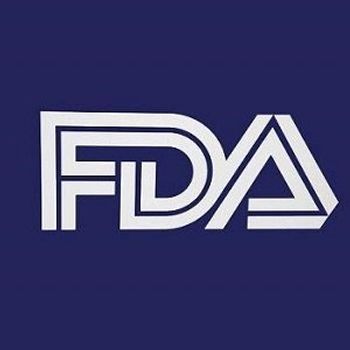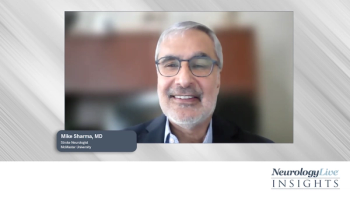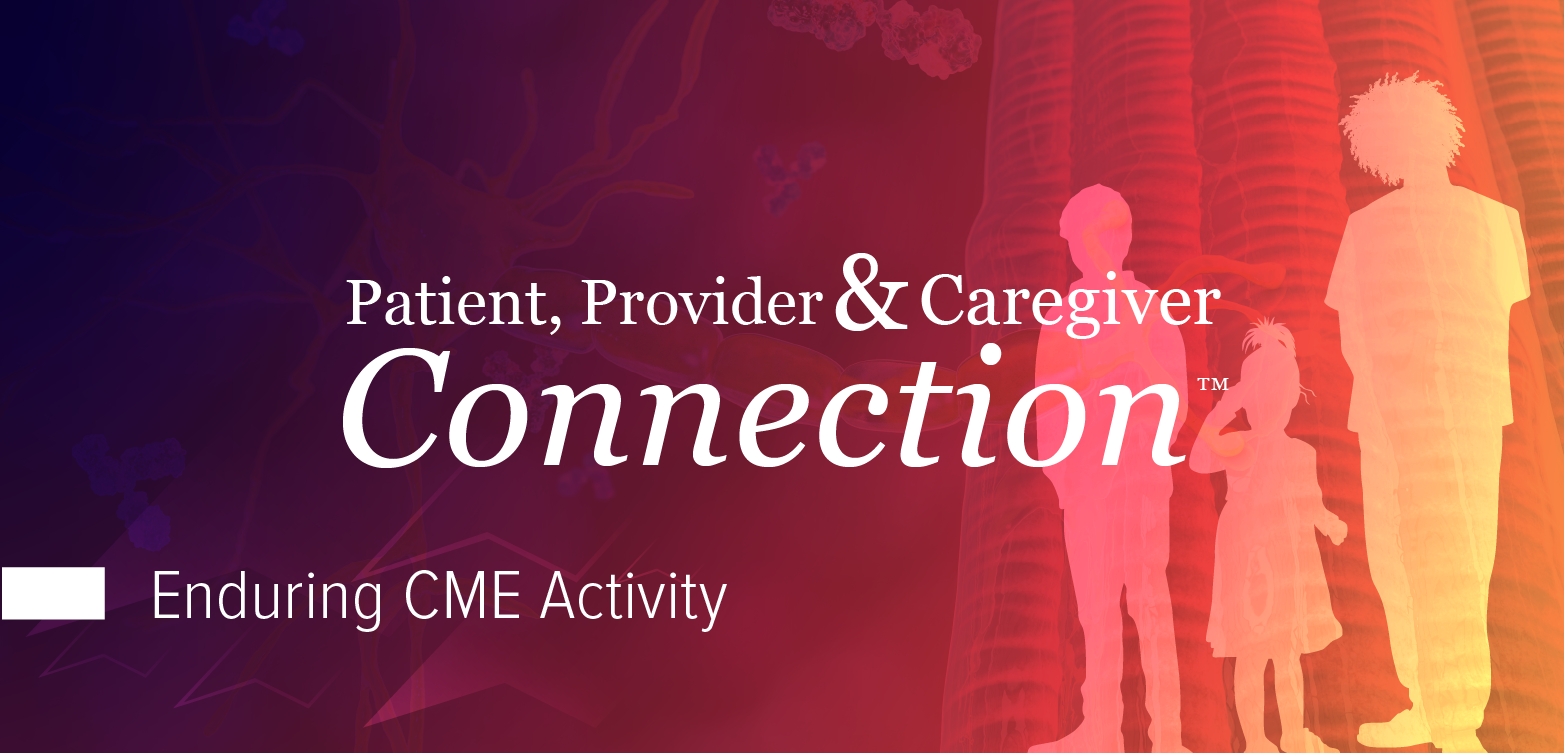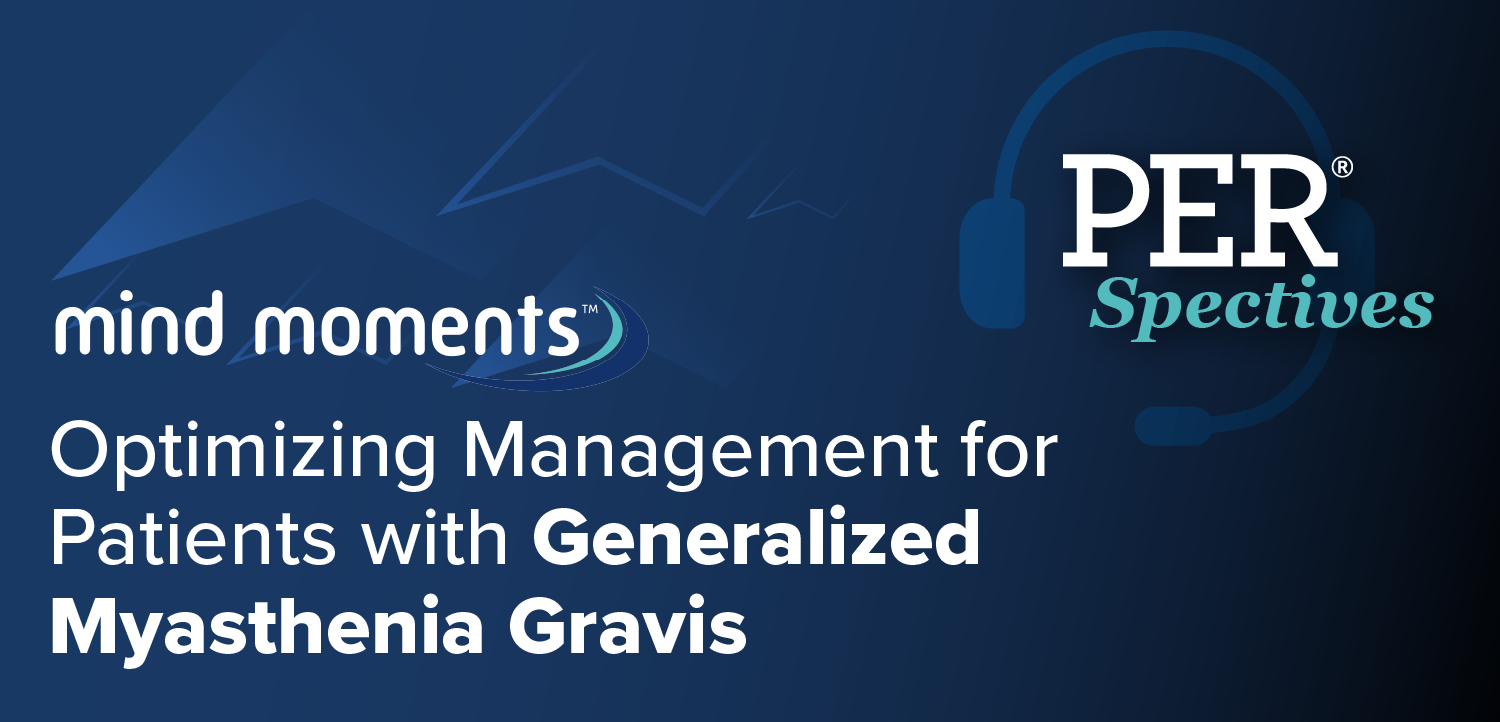
Most Impactful Neurology Trial Readouts From Early 2025
Key Takeaways
- AD109 significantly reduced apnea-hypopnea index in obstructive sleep apnea, showing promise as an alternative to CPAP therapy.
- ATH434 demonstrated clinical and biomarker benefits in multiple system atrophy, particularly at the 50-mg dose, slowing disease progression.
Overviewing the major clinical trial readouts in neurology from the first half of 2025, with data that could reshape patient care.
In the first half of 2025, the neurology field has seen a wave of major clinical trial readouts that may shape the future of care across multiple disease areas. From pivotal phase 3 results in Alzheimer disease (AD) and migraines to promising data in rare neuromuscular and autoimmune disorders, the latest findings could redefine treatment possibilities and advancing precision medicine in neurology. These readouts have garnered widespread attention from clinicians and researchers alike, offering critical insights into therapeutic efficacy, safety, and trial design innovation.
As a trusted resource for the clinical neurology community, Neurology Live® has compiled the most impactful and practice-changing trial results released in 2025 thus far. Whether through new drug approvals, mechanistic breakthroughs, or expanded indications for existing therapies, these data reflect the ongoing momentum in neurologic research and the evolving standards of patient care.
Clinical Trial Readouts
Phase 3 SynAIRgy Trial of AD109 (Apnimed)
AD109, an oral once-daily nighttime pill, targets the hypoglossal motor nucleus, a key neural center responsible for controlling upper airway dilator muscles. By enhancing noradrenergic signaling through atomoxetine and reducing muscle relaxation via aroxybutynin, the agent aims to maintain upper airway patency during sleep. The investigational agent was recently assessed in the phase 3 SynAIRgytrial (NCT05813275) in patients with mild, moderate, and severe obstructive sleep apnea (OSA), where findings showed that AD109 met its primary end point in reducing apnea-hypopnea index (AHI).
SynAIRgy, considered the largest such drug trial for OSA, included 646 adults with the disease who were intolerant of or currently refusing continuous positive airway pressure (CPAP). Coming into the study, 34.4% of patients had mild OSA, 42.4% had moderate OSA, and 23.2% had severe OSA. Overall, treatment with AD109, a fixed-dose combination of aroxybutynin 2.5 mg and atomoxetine 75 mg, led to a statistically significant change in AHI, the primary end point, over a 26-week period relative to placebo (P = .001).1
In the trial, patients underwent a polysomnogram on treatment at week 4. Overall, treatment with the oral agent led to meaningful improvements in oxygenation, as assessed by hypoxic burden (P < .0001) and oxygen desaturation index (P = .001). Furthermore, 51.2% of treated patients experienced a reduction in OSA disease severity and 22.3% achieved complete disease control, defined as an AHI of fewer than 5 events per hour.
Phase 2 Trial of ATH434 (Alterity)
ATH434 is an oral investigational agent developed to inhibit the aggregation of pathological proteins implicated in neurodegeneration. The agent was recently assessed in a randomized, double-blind, placebo-controlled phase 2 trial (NCT05109091) for multiple system atrophy (MSA). Recent top-line results of the trial showed that ATH434 was well tolerated and demonstrated clinical as well as biomarker-based benefits, particularly at the 50-mg dose, in patients with early-stage MSA.2
The study enrolled 77 participants across 23 sites in 6 countries who received either 50 mg or 75 mg of ATH434 or placebo twice daily for 12 months. Findings showed that ATH434 was well tolerated and effectively reduced iron accumulation in brain regions affected by MSA. The 50-mg dose demonstrated the greatest benefit, slowing clinical progression by 48% at 52 weeks compared with the placebo (P = .03). Additional analyses also suggested trends in improved motor function and preserved brain volume.
The primary end point of the trial assessed brain iron content via MRI. All told, ATH434 reduced or stabilized iron accumulation in affected brain regions, with the 50-mg dose showing significant reductions in the putamen at 26 weeks (P = .025) and approaching significance in the globus pallidus at 52 weeks (P = .08). Clinical efficacy was assessed using the Unified MSA Rating Scale Part I, a common MSA assessment that measures disability and disease severity.2 Overall, patients on the 50-mg dose experienced a 48% slower disease progression at 52 weeks (P = .03) compared with placebo and the 75-mg dose slowed progression by 29% (P = .2). At 26 weeks, the 75-mg dose showed a 62% slowing of disease progression (P = .05).
ESCAPE-MeVO Trial of Endovascular Thrombectomy
Endovascular thrombectomy (EVT) is considered a time-sensitive treatment for patients with acute stroke and has been firmly established as standard care.3 The ESCAPE-MeVO trial (NCT05151172) evaluated EVT plus best medical care for acute ischemic stroke due to medium-vessel occlusion within 12 hours of last seen normal but found no improvement in clinical outcomes compared with best medical care alone.
The results, presented as a late breaker at the
The primary end point, modified Rankin Scale (mRS) score of 0 to 1 at 90 days, was indifferent between the 2 groups on both unadjusted (risk ratio [RR], 0.97; 95% CI, 0.79-1.18) and adjusted (RR, 0.95; 95% CI, 0.79-1.15) analyses. Secondary end points showed similar results, as there was little difference between the groups on mRS scores of 0 to 2 at 90 days (unadjusted: RR, 0.92; 95% CI, 0.79-1.07; adjusted: RR, 0.92; 95% CI, 0.80-1.05). Notably, the mean volume of stroke was comparable as well (best medical care: 4.30 mL [SD, 0.20] vs EVT + best medical care: 4.35 mL [SD, 0.23]).
Phase 3 EMERGE Trial of AXS-07 (Axsome Therapeutics)
AXS-07 (Symbravo), a recently approved combined therapy of meloxicam and rizatriptan, is thought to act by inhibiting calcitonin gene-related peptide (CGRP) release, reversing CGRP-mediated vasodilation, and inhibiting neuroinflammation, pain signal transmission, and central sensitization. The agent was recently investigated in the phase 3 EMERGE trial (NCT05550207), with the treatment meeting its primary end point in a cohort of patients who had previous treatment failure with oral CGRP inhibitors.5
In EMERGE (n = 96), treatment with AXS-07 resulted in greater migraine treatment response relative to prior oral CGRP inhibitors, as assessed by changes in Migraine Treatment Optimization Questionnaire total score (5.2 vs 2.8; P < .001) over the 8-week treatment period. In the study, enrolled patients were switched from their oral CGRP inhibitor to AXS-07 and treated and had their next 4 migraine attacks treated with AXS-07 over a period of up to 8 weeks. Results showed that 47.9% of treated patients on AXS-07 demonstrated pain freedom in 2 hours for most attacks compared with 1.0% of those after treatment with oral CGRPs (P < .001).
Treatment with AXS-07 demonstrated superior outcomes compared with oral CGRP inhibitors, with 47.9% of patients reporting sustained migraine pain relief for at least 24 hours following a single dose compared with 16.7% with oral CGRPs (P < .001). Additionally, 51.0% of patients reported the ability to quickly resume normal activities after AXS-07 treatment vs 11.5% with oral CGRPs (P < .001) and 63.5% felt comfortable planning daily activities compared with 26.0% with oral CGRPs (P < .001). AXS-07 also significantly improved overall quality of life and daily functioning across all domains of the Migraine-Specific Quality-of-Life Questionnaire (P ≤.003 to <.001).
Phase 3 D1AMOND Study of Ecopipam (Emalex Biosciences)
Ecopipam is an investigational dopamine-1 receptor antagonist in development as a potential treatment for certain central nervous system disorders such as Tourette syndrome (TS). The agent was recently assessed in the phase 3 D1AMOND study (NCT05615220) for the treatment of TS. In recently reported top-line data, the treatment met its primary and secondary end points among patients with TS.
For the primary efficacy end point, measured by the time to relapse among pediatric patients, results indicated that 41.9% of those randomly assigned to ecopipam experienced a relapse compared with 68.1% of those on placebo (HR, 0.5; 95% CI, 0.3-0.8; P = .0084). As for the secondary efficacy end point, which assessed time to relapse in both pediatric and adult participants after random assignment, findings showed that 41.2% of patients in the ecopipam group experienced relapse compared with 67.9% in the placebo group (HR, 0.5; range, 0.3-0.8; P = .0050).6
In the phase 3 study, researchers enrolled 167 pediatric and 49 adult patients with TS across study sites in the US, Canada, and the European Union. Participants who showed significant improvement in vocal and motor tics after a 12-week open-label treatment with ecopipam were then randomly assigned to either continue ecopipam or switch to a placebo during a 12-week double-blind withdrawal phase.
Phase 2b RewinD-LB Study of Neflamapimod (CervoMed)
Neflamapimod is an oral small-molecule drug that selectively inhibits p38a MAP kinase, a key enzyme involved in inflammation and neurodegeneration. The agent has been investigated across multiple neurodegenerative and neuroinflammatory conditions, including dementia with Lewy bodies (DLB), Alzheimer disease, and stroke recovery. Earlier this year, CervoMed released positive data from the first 16 weeks of an extension phase from the
Of the 159 participants originally enrolled in the first 16-week double-blind, placebo-controlled phase of the study, 152 completed this initial phase and 149 participants continued to the extension phase, where all received neflamapimod. Investigators used a mixed-effects model for repeated measures to study change in Clinical Dementia Rating Sum of Boxes (CDR-SB), the primary end point. From the initial phase through week 16, the change in CDR-SB was shown to be significantly lower in the new capsule group compared with the old capsule group (difference, –0.73; 95% CI, –1.14 to –0.32; P < .001).
Over the 16‑week extension, patients receiving the new capsule formulation experienced a statistically significant benefit vs placebo (difference, –0.45; 95% CI, –0.78 to –0.15; P = .003), with an even stronger effect in individuals whose plasma phosphorylated τ 181 (p‑τ181) was below the 2.2-pg/mL threshold associated with AD copathology. By week 8, the new capsules yielded a notably better Clinical Global Impression of Change score compared with the original formulation (4.02 vs 4.46; P = .035), and this improvement was more pronounced in participants with lower p‑τ181 (3.90 vs 4.45; P = .011).7
Phase 3 APOLLOE4 Trial of Valiltramiprosate (Alzheon)
At the 2025 AD/PD International Conference on Alzheimer’s and Parkinson’s Disease, held from April 1 to 5 in Vienna, Austria, investigators
Overall, the data showed that the investigational agent did not meet its primary end point of change in Alzheimer’s Disease Assessment–Cognitive (ADAS-Cog13) subscale; however, more pronounced clinical effects were seen in a population of patients with lesser progressed forms of the disease. In the prespecified modified cognitive impairment (MCI) subgroup, the treatment showed a nominally significant 52% improvement on ADAS-Cog13 and a 102% benefit on CDR-SB along with a 96% slowing on Disability Assessment for Dementia (DAD; P = .016) and 70% on Instrumental Activities of Daily Living (IADL; P = .268). In contrast, across the full analysis set (MCI + mild AD), the effects were more modest, with 11% slowing on ADAS-Cog13 (P = .607), 23% on CDR-SB (P = .309), 29% on DAD (P = .279), and 17% on Mini-Mental State Examination (MMSE; P = .454).8,9
Coming into the study, 41% of those on valiltramiprosate had MCI. In the mild AD population, valiltramiprosate underperformed compared with placebo across all measured outcomes, showing –18% slowing on ADAS-Cog13, –7% on CDR-SB, –5% on DAD, –7% on MMSE, and –20% on Amsterdam IADL—all favoring placebo. These findings reinforce that cognitive benefits with treatment are more pronounced in earlier stages of AD.
Phase 2 RESCUE Trial of RNS60 (Revalesio)
RNS60 is an investigational therapy that uses charge-stabilized nanostructures in saline to modulate cellular signaling pathways, including inflammation and oxidative stress, without traditional drugs. The phase 2 RESCUE trial (NCT04693715) tested the therapeutic effects of 2 doses of RNS60 against placebo in a cohort of 82 patients with acute ischemic stroke (AIS). Across a 90-day period, patients were randomly assigned for age, NIHSS score, and Alberta Stroke Program Early CT Score for each 48-hour treatment.
Data presented at the 2025 American Academy of Neurology (AAN) Annual Meeting revealed that RNS60 is safe when used with standard of care and led to reduction in hospitalization time and infarct volume growth among patients with AIS. Overall, RNS60 treatment alongside standard of care resulted in a 4.8-day reduction in hospital stay and a statistically significant 50% reduction in infarct growth compared with placebo (P = .022; P < .05).10
In the high-dose RNS60 cohort, 72% of patients were functionally independent at day 90 (mRS score, 0-2) compared with 37% in the placebo group. Additionally, at 90 days, a 16% greater proportion of patients in the high-dose group achieved an mRS score of 0 to 2 (OR, 3.7; P = .36). More patients also reached a Barthel Index score of more than 95 (71% vs 43%; OR, 5.8; P = .13), and the high-dose group demonstrated higher European Quality of Life 5 Dimensions 5 Level index values at each prespecified time point (mean score, 0.74 ± 0.13 vs 0.58 ± 0.13; P = .09), suggesting a trend toward improved functional and quality-of-life outcomes with RNS60 treatment.
Phase 3 Study of Telitacicept (RemeGen)
Telitacicept is a recombinant TACI-Fc fusion protein that dually neutralizes BLyS and APRIL, 2 crucial survival signals for B cells and plasma cells. Unlike therapies that only deplete CD20 B cells, telitacicept also suppresses long-lived plasma cells, offering broader and faster reduction in antibody levels.
Earlier this year,
The findings, which proved significant, led to the drug’s approval in China approximately a month
Phase 2 CANYON Trial of Sevasemten (Edgewise Therapeutics)
At the
In the analysis, the most responsive proteins were TNNI2 (P < .001), fast skeletal regulatory light chain (P < .001), and Calpain-3 (P < .001). Considered the largest trial of BMD to date, it showed the 1-year changes in muscle injury proteins in the placebo subgroup were not significantly different from the natural history (P = .01) whereas the sevasemten subgroup showed a significant reduction compared with natural history (P < .001). Most notably, reductions in proteins associated with muscle injury were sustained through 6 to 12 months of treatment (P < .0001).
In the original study, sevasemten met its primary end point, showing a 28% greater reduction in creatine kinase levels compared with placebo over a 6- to 12-month period (P = .02) in patients with BMD. Additionally, patients treated with sevasemten showed a 1.1-point advantage on the North Star Ambulatory Assessment compared with placebo, though this secondary end point did not reach statistical significance (P = .16).11,12
REFERENCES
1. Apnimed announces positive topline results in the first landmark phase 3 clinical trial of AD109, an investigational once-daily oral pill for obstructive sleep apnea. News release. Apnimed. May 19, 2025. Accessed June 30, 2025. https://apnimed.com/article/ad109phase3toplineresults/
2. Alterity Therapeutics announces positive ATH434 phase 2 trial results in multiple system atrophy led by robust clinical efficacy. News release. Alterity Therapeutics. January 30, 2025. Accessed January 30, 2025. https://alteritytherapeutics.com/investor-centre/news/2025/01/30/alterity-therapeutics-announces-positive-ath434-phase-2-trial-results-in-multiple-system-atrophy-led-by-robust-clinical-efficacy/
3. Fugelli CG, Kurz MW, Hansen BS, et al. Impact of multidisciplinary simulation training on endovascular thrombectomy: workflow, patient outcomes and anaesthetic management. Interv Neuroradiol. Published online June 17, 2025. doi:10.1177/15910199251336952
4. Goyal M, et al. Endovascular treatment to improve outcomes for medium vessel occlusions: the ESCAPE-MeVO trial. Presented at: International Stroke Conference 2025; February 5-7, 2025; Los Angeles, CA. LB4.
5. Axsome Therapeutics announces SYMBRAVO (meloxicam and rizatriptan) achieves primary endpoint in the EMERGE phase 3 trial in migraine patients experiencing inadequate response to oral CGRP inhibitors. News release. Axsome Therapeutics. February 24, 2025. Accessed February 24, 2025. https://www.globenewswire.com/news-release/2025/02/24/3031008/33090/en/Axsome-Therapeutics-Announces-SYMBRAVO-meloxicam-and-rizatriptan-Achieves-Primary-Endpoint-in-the-EMERGE-Phase-3-Trial-in-Migraine-Patients-Experiencing-Inadequate-Response-to-Oral.html
6. Emalex Biosciences’ lead candidate meets primary and secondary endpoints in phase 3 Tourette syndrome study. News release. Emalex Biosciences. February 25, 2025. Accessed June 30, 2025. https://emalexbiosciences.com/news/emalex-biosciences-lead-candidate-meets-primary-and-secondary-endpoints-in-phase-3-tourette-syndrome-study/
7. CervoMed announces positive results from the extension phase of its phase 2b clinical study of neflamapimod in patients with dementia with Lewy bodies. News release. CervoMed. March 10, 2025. Accessed June 30, 2025. https://ir.cervomed.com/news-releases/news-release-details/cervomed-announces-positive-results-extension-phase-its-phase-2b
8. Inhibition of beta amyloid oligomer neurotoxicity with oral valiltramiprosate/ALZ-801 in APOE E4/E4 homozygotes with early Alzheimer disease. Presented at: AD/PD 2025 Alzheimer's & Parkinson's Diseases Conference; April 1-5, 2025; Vienna, Austria.
9. Kesslak JP, Hey JA, Abushakra S, et al. Positive disease modifying effects of oral ALZ-801 on plasma biomarkers, volumetric MRI and cognition at 104 weeks: results of a phase 2 study of APOE4 carriers with early Alzheimer’s disease. Abstract presented at: 2024 American Academy of Neurology Annual Meeting; April 13-18, 2024; Denver, CO. Abstract ES1-001.
10. RemeGen announces exciting results of telitacicept phase 3 clinical trial for patients with generalized myasthenia gravis. News release. RemeGen. April 8, 2025. Accessed June 30, 2025. https://www.prnewswire.com/news-releases/remegen-announces-exciting-results-of-telitacicept-phase-3-clinical-trial-for-patients-with-generalized-myasthenia-gravis-302424073.html
11. Barthel B. Improved plasma signature of contraction-induced muscle injury with sevasemten in Becker muscular dystrophy in the CANYON phase II trial. Abstract presented at: 2025 Muscular Dystrophy Association Clinical & Scientific Conference; March 16-19, 2025; Dallas, TX. Abstract LB432.
12. Edgewise Therapeutics announces positive topline results from the CANYON phase 2 trial of sevasemten in individuals with Becker muscular dystrophy (Becker). News release. Edgewise Therapeutics Inc. December 16, 2024. Accessed June 30, 2025. https://www.businesswire.com/news/home/20241216264915/en/Edgewise-Therapeutics-Announces-Positive-Topline-Results-from-the-CANYON-Phase-2-Trial-of-Sevasemten-in-Individuals-with-Becker-Muscular-Dystrophy-Becker
Newsletter
Keep your finger on the pulse of neurology—subscribe to NeurologyLive for expert interviews, new data, and breakthrough treatment updates.



































